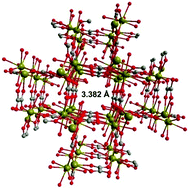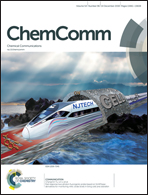Abstract
This article explains the need for energy-efficient large-scale CO2 capture and briefly mentions the requirements for optimal solid sorbents for this application. It illustrates the potential of ultra-microporous metal–organic frameworks (MOFs, pore size: <7.0 Å) for the separation of CO2 from industrially abundant greenhouse gas mixtures. Some high-performing and well-studied MOFs are discussed to communicate the present status of the field. From their structural features, some successful design principles for creating such ultra-microporous MOFs are derived. Towards the close, favorable CO2 diffusion in many of these small pore MOFs is highlighted.



 Please wait while we load your content...
Please wait while we load your content...